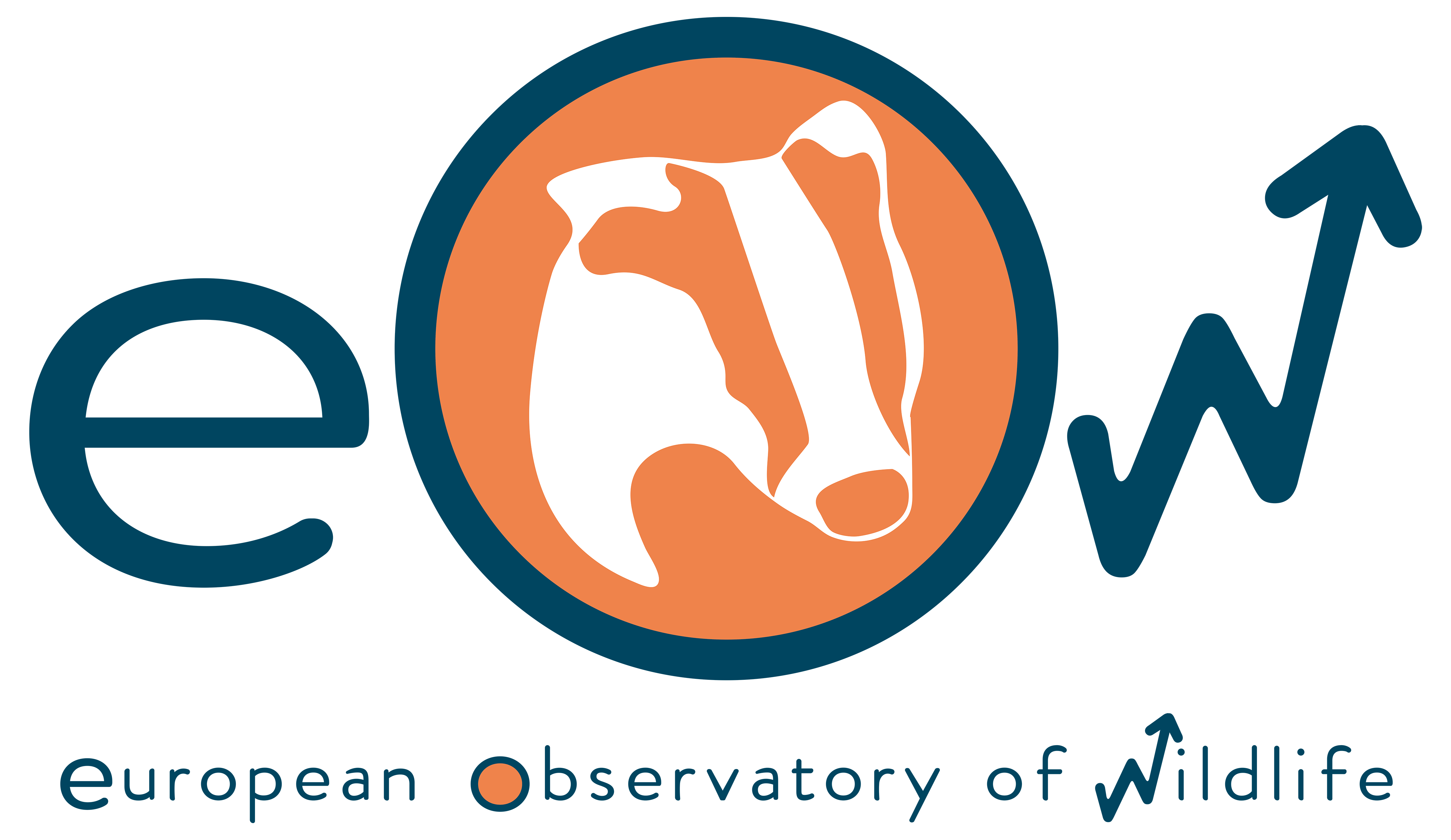Wildlife monitoring
What is wildlife monitoring?
Wildlife monitoring is conceived as the surveillance of the natural environment or any of its components. In other words, the regular observation and recording of parameters on a long-term scale to show trends over time. This could focus on a certain species, its population, an ecosystem, human factors involved and the relationship and impacts among them.
To pursue useful results, all monitoring must guarantee a correct design and subsequent data analysis.
Wildlife monitoring provides information to involved stakeholders, not losing its true essence: usefulness for wildlife management.


Why monitoring wildlife?
Determining and monitoring wildlife population trends and driving factors allow obtaining baseline data to compare over time. It provides not only a better understanding of the essential ecological, and epidemiological but also socioeconomic processes.
The information collected, once analyzed, is essential for further understanding ecological relationships and for subsequent improved decision-making with a technical and scientific basis.
Wildlife monitoring also allows calibrating and better understanding the relationship between population abundance and damages (overabundance), so as detecting early possible threats to biodiversity, agriculture, animal health, and human well-being
Based on the above, wildlife monitoring is essential to develop proactive conservation of wildlife resources so as preventive actions when the impacts are still minor, to be more effective in the response and to save economic, social, and environmental costs.
Wildlife monitoring helps to “reconcile” stakeholders with different interests and favor the “agreement”, helping to adopt an adaptive management model in decision-making.
Thanks to the spatial component, monitoring potentially contributes to identify the preferred or necessary habitats for conservation, the impact of infrastructures and the management models for species over the wildlife spatial distribution ranges, or where their impacts occur. This allows implementing management plans adapted to specific contexts.
European wildlife and human health surveillance programs lack integration with proper monitoring of populations (integrated monitoring).
Evaluating the management and fulfillment of objectives, for example, to regulate population control activities. An ADAPTIVE management model informed decision-making continually adjusts to objectives and resources, becoming more effective and practical over time (Figure).
European wildlife and human health surveillance programs lack integration with proper monitoring of populations (integrated monitoring).
Evaluating the management and fulfillment of objectives, for example, to regulate population control activities. An ADAPTIVE management model informed decision-making continually adjusts to objectives and resources, becoming more effective and practical over time.
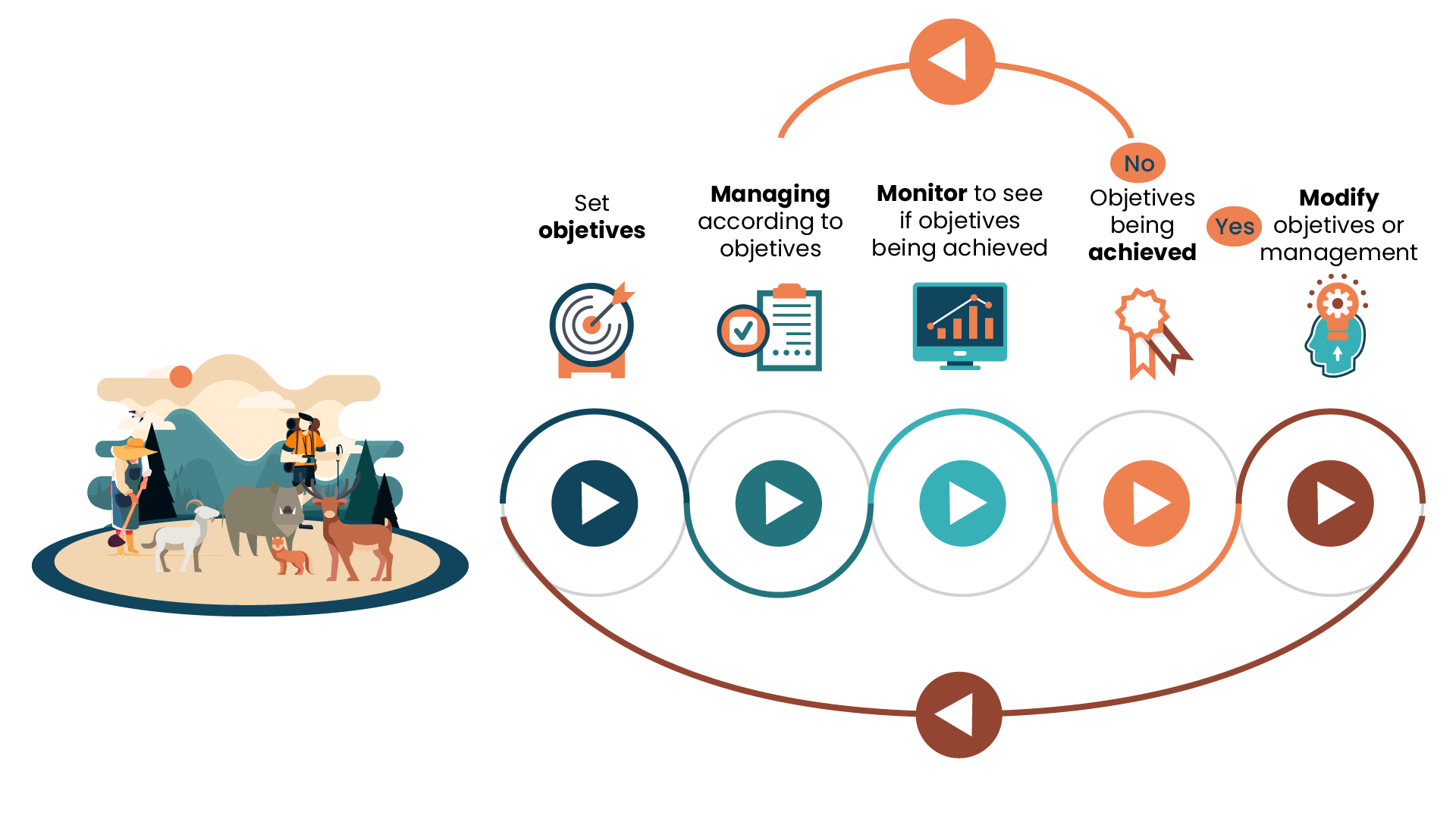
The adaptive management of wild species, habitats, ecosystems, consists of dealing with evaluating their operation in an interactive way, adjusting actions and practices to the results obtained, through continuous monitoring.
What to monitor?

Developing clear monitoring objectives is the first step in the implementation of effective monitoring programs, and they will determine which variables to measure in relation to the different dimensions of the problem, and how to do it.
As for population data, wildlife professionals must choose between two main options when trying to assess population dynamicss
- i) estimate population size / absolute density
- ii) estimate a relative index of variation (usually annual) in the size / density of the population (or even monitor only the damage caused as an indirect index of abundance).
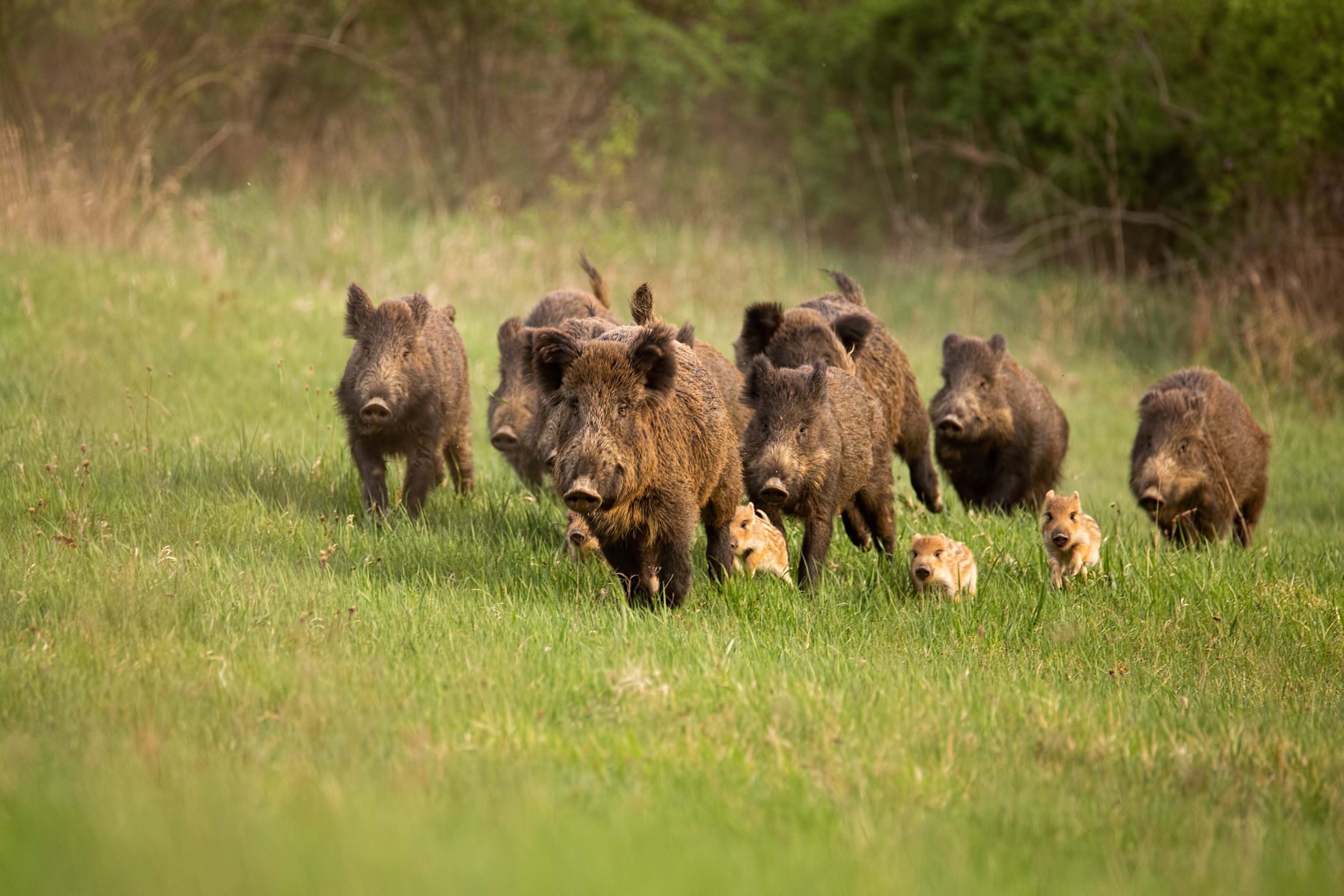
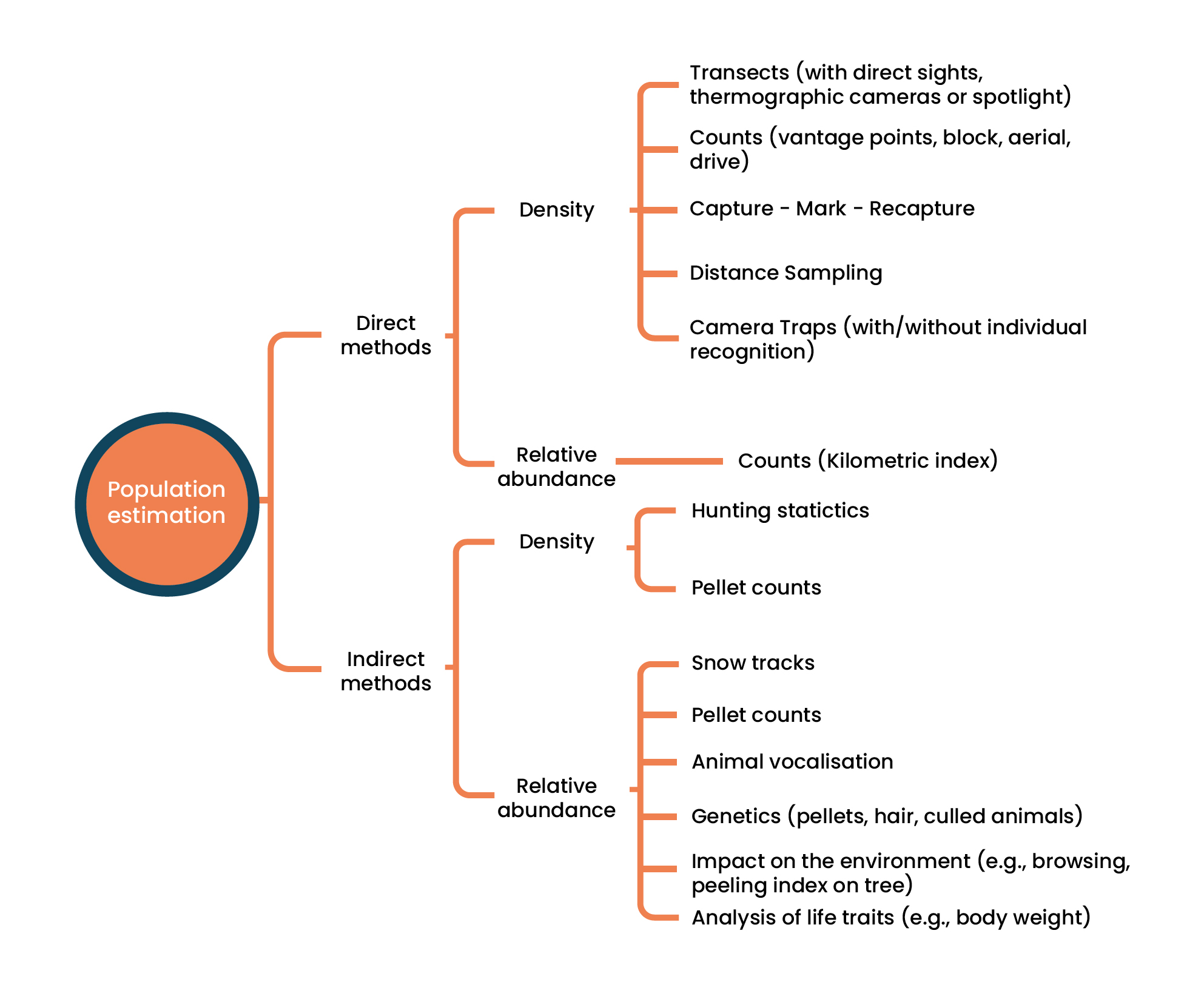
Classification of available methods for estimating of wild mammal population density and relative abundance. Direct methods: methods based on the direct observation of animals, Indirect methods: methods based on the detection of presence signs, see the text for more details (Source: ENETWILD consortium et al, 2019)
A method that gives a density estimate rather than relative abundance, if possible, should be used because they are less suitable for planning the management and conservation of mammal populations.
Wildlife monitoring must integrate different taxa and ecological variables (integrated monitoring), such as wildlife diseases.

How monitoring wildlife?
The questions (research, management related) that we are interested in answering determine the scale at which to initially propose the monitoring, the frequency and nature of the samplings, and, therefore, the accuracy and precision that we consider sufficient for our monitoring estimates.
Normally answering the questions requires multidisciplinary teamworks and monitoring several parameters, such as population and diseases, i.e., the so-called integrated monitoring.

Methods
Methods to estimate abundance provide accurate (unbiased) and accurate data if the study design is representative and the effort is sufficient (link to guidances and protocols here)
This is especially true for species with an aggregate pattern of spatial distribution and marked habitat selection.
On a local scale (e.g., in management units), every method on estimating wild mammal populations has its own advantages, depending on the habitat, the weather conditions and other ecological factors.
Sampling design and possible extension of the results
A standardized wildlife monitoring network requires selecting sampling locations, which are then used to infer our monitoring results to a larger area, encompassing the population, ecosystem, or range of interest.
On a large scale, we will be able to obtain information throughout the entire distribution area of a species or carry out samplings in certain populations, for example, stratifying the main sampling regions to monitor species.
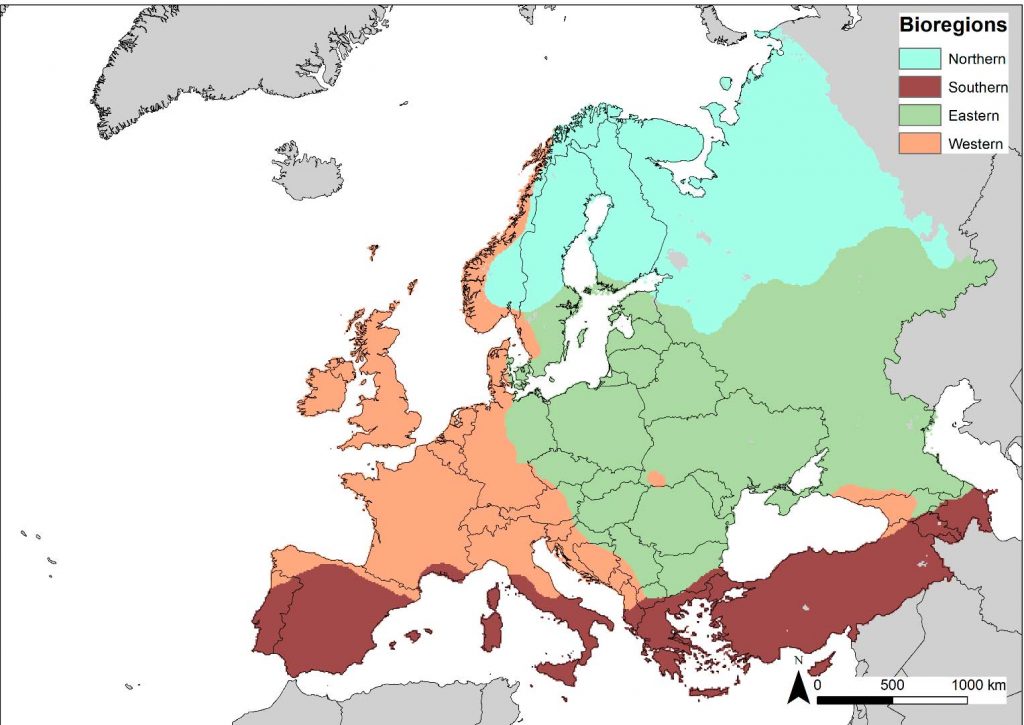
Bioregions proposed for monitoring the abundance of wildlife populations at the European level (ENETWILD 2021).
Team coordination and data storage
The way information is collected and recorded by different, often multidisciplinary teamworks, must always follow agreed standards, which will allow us to make comparisons among study areas.
Data storage and management must ensure that the integrity, traceability, and original quality of the data are maintained.
The recent development of information technologies has allowed the appearance of APPS of great applied value to facilitate the collection and management of information: the data is digitized from the same field.
